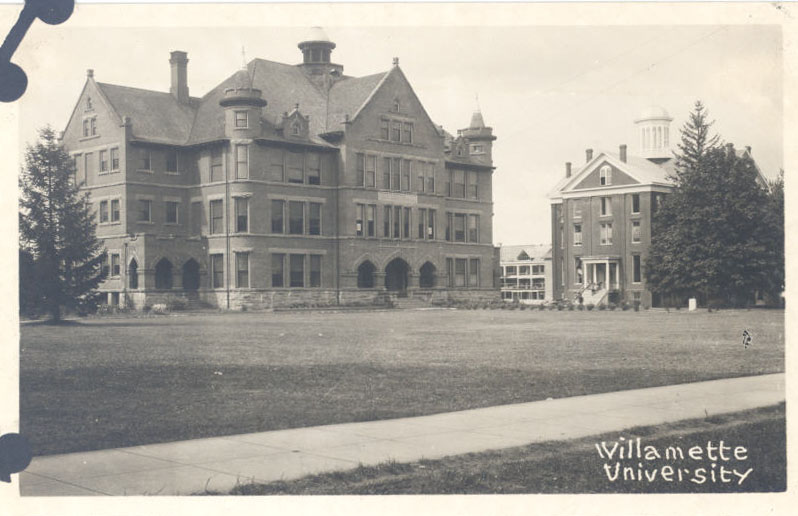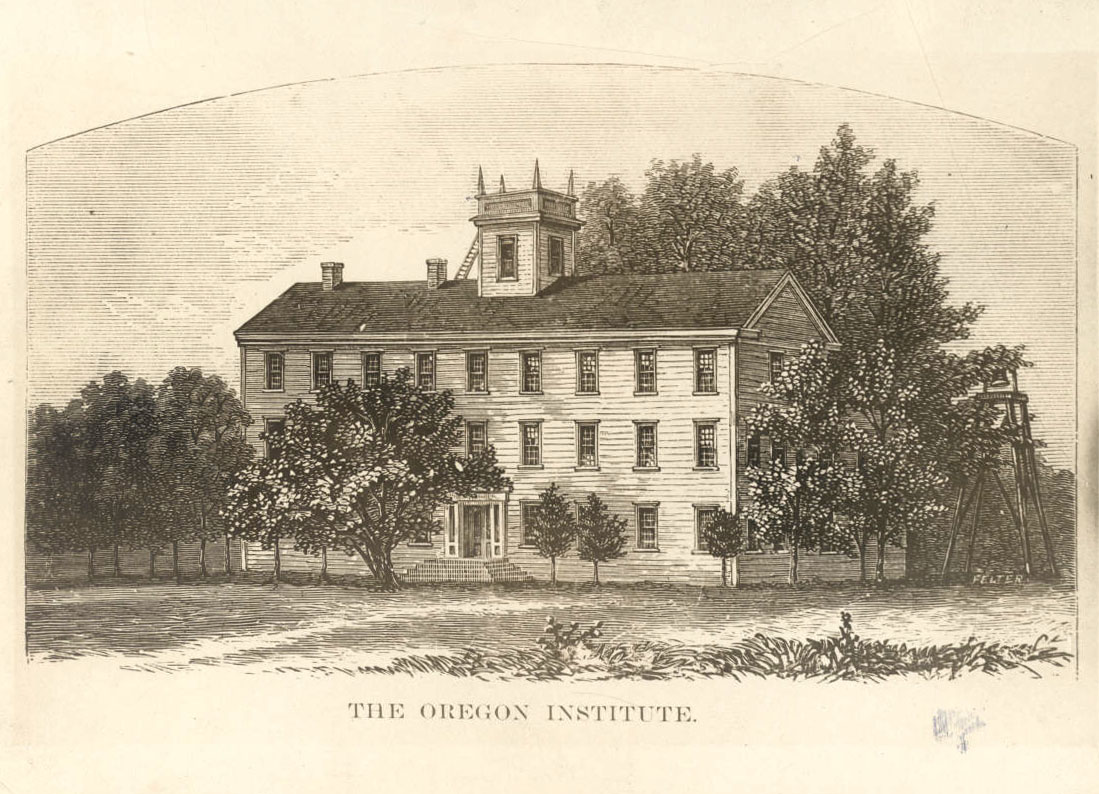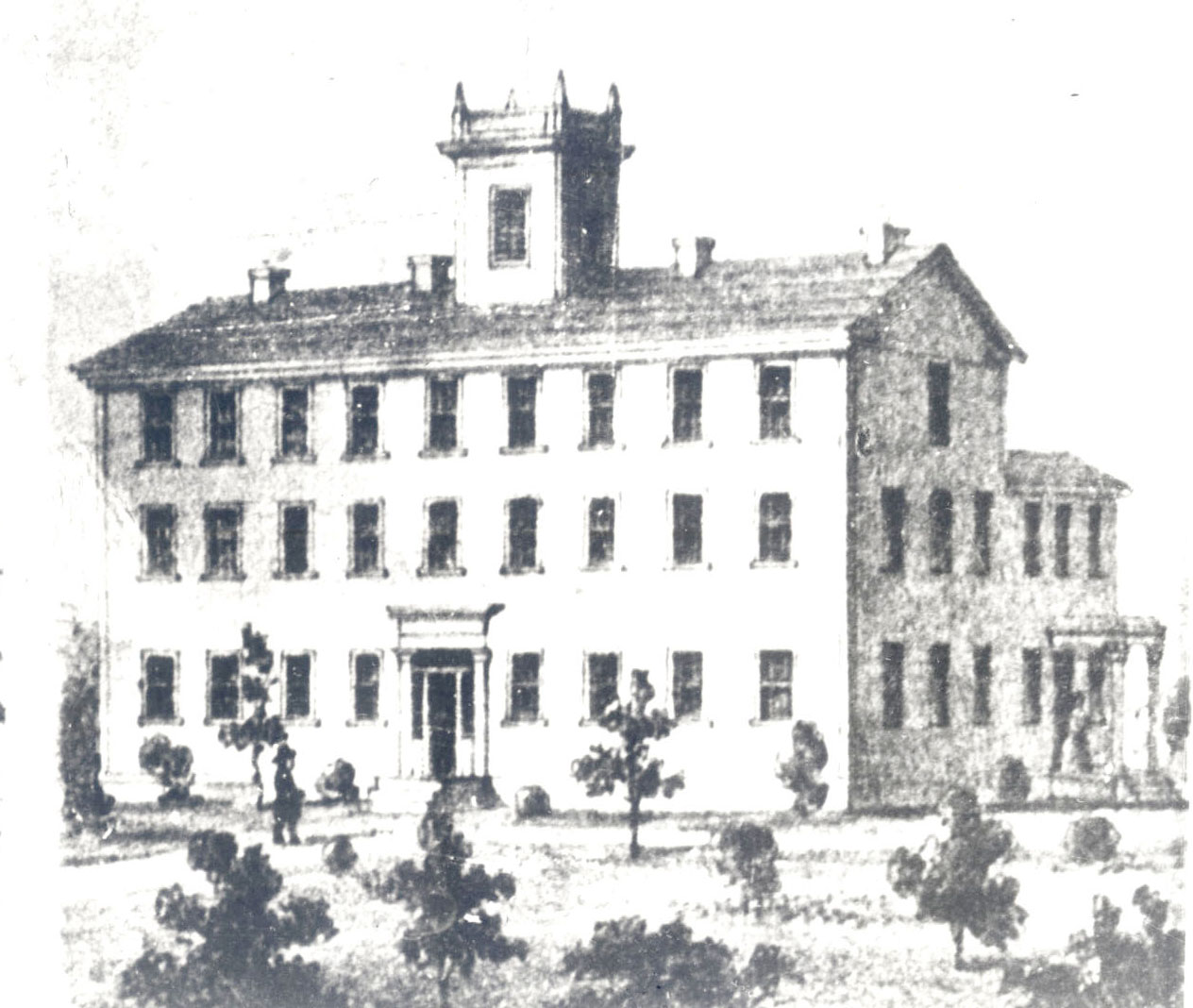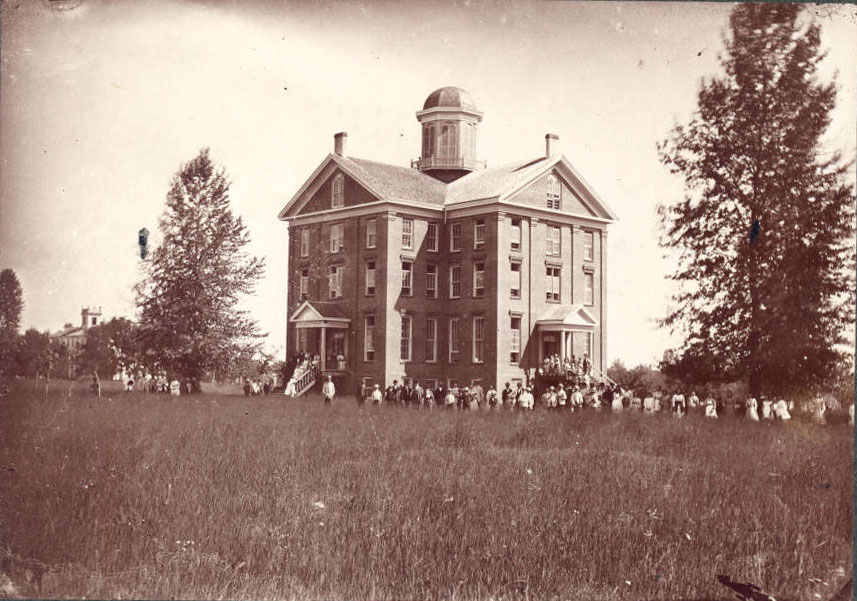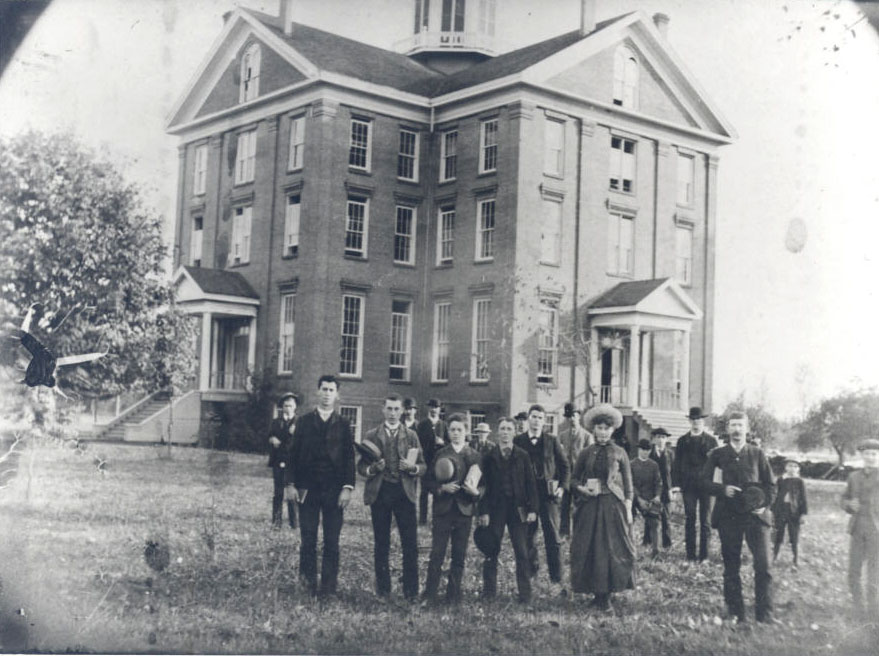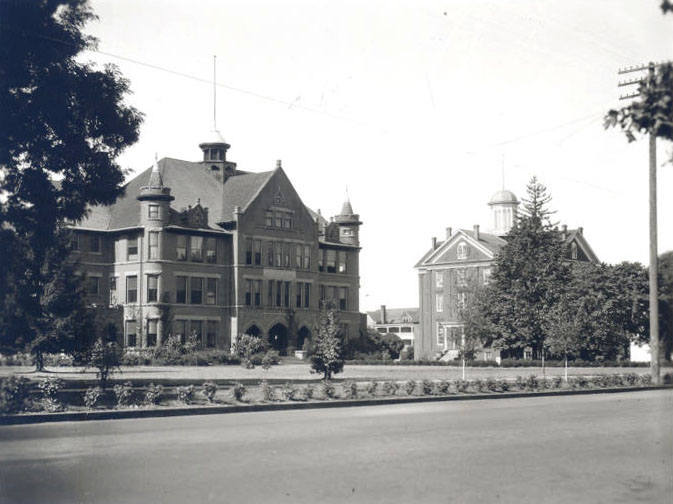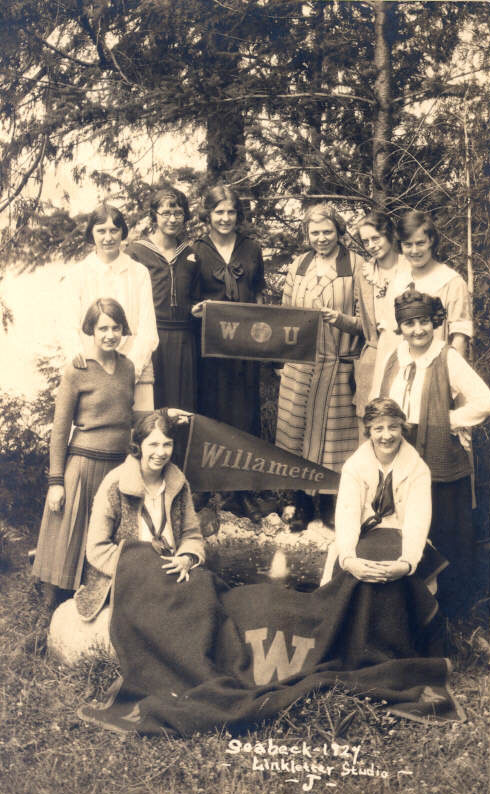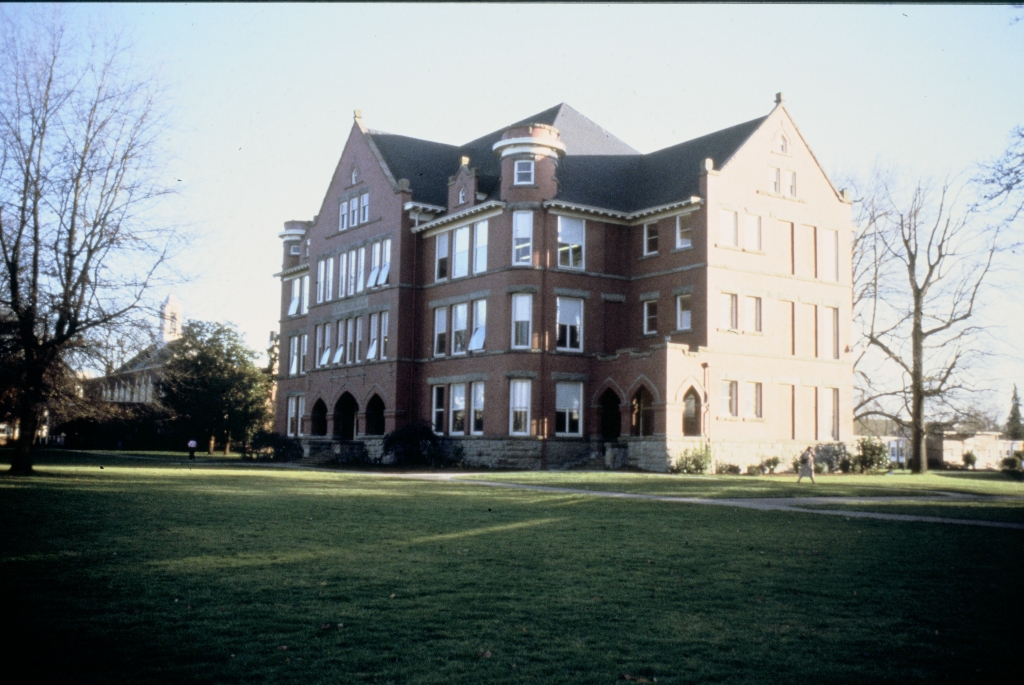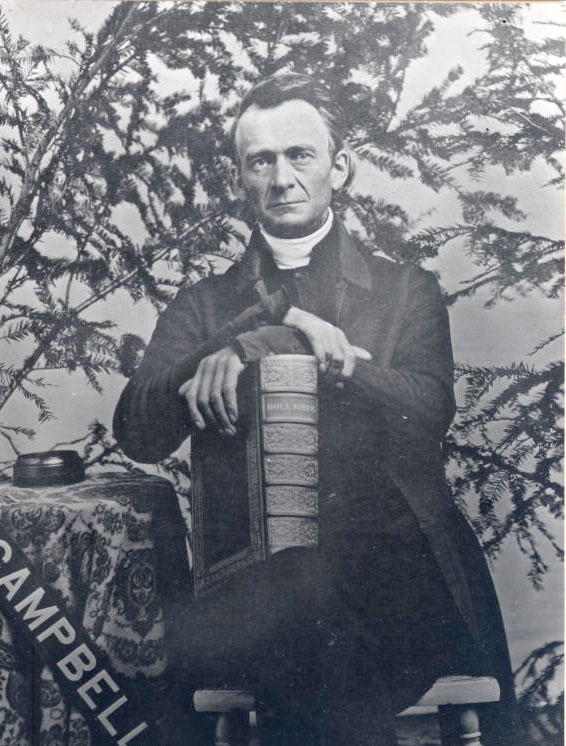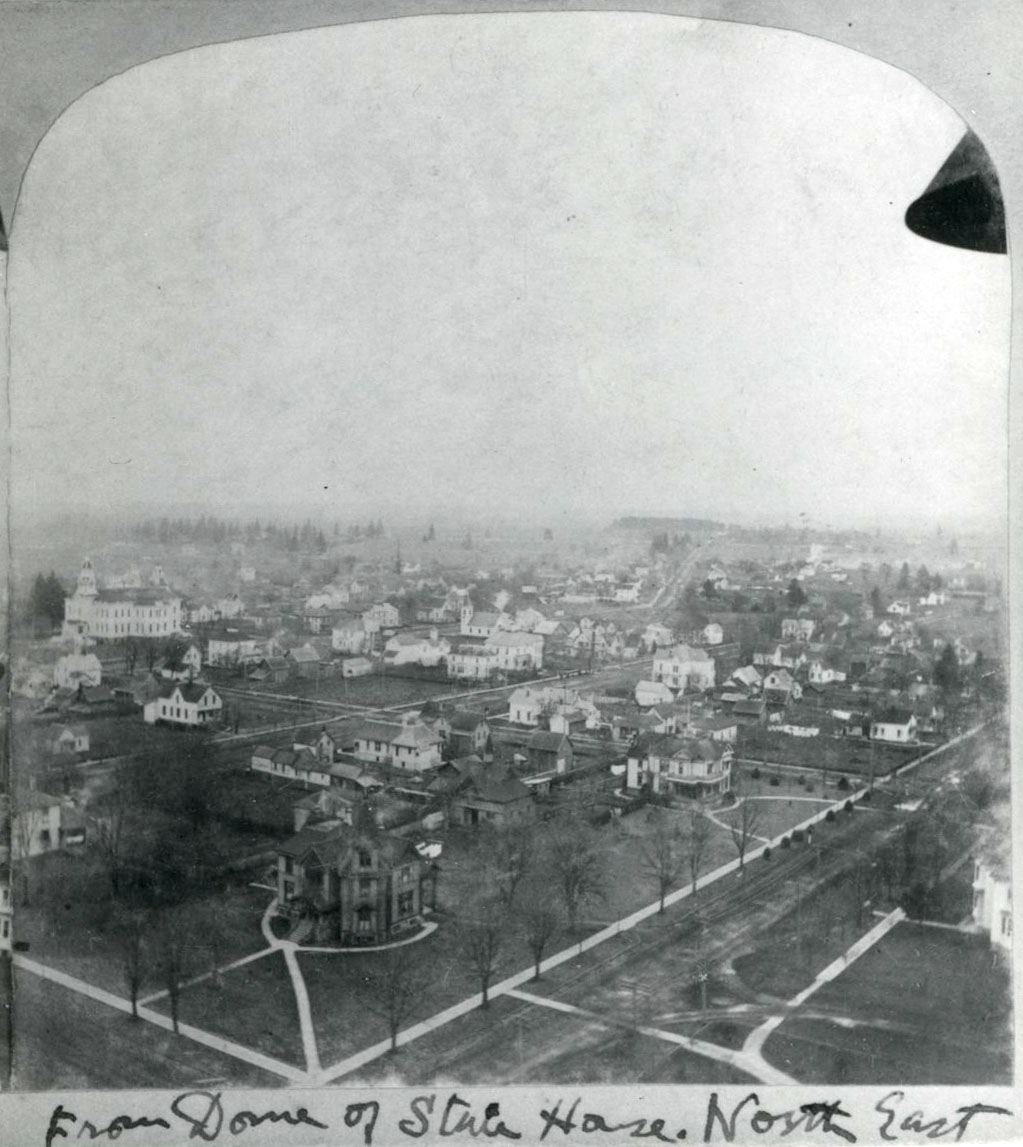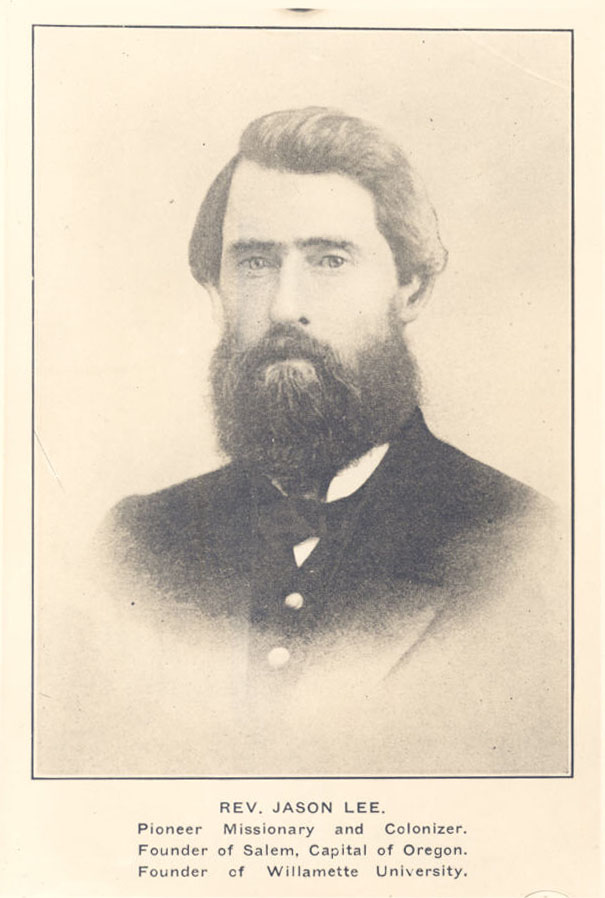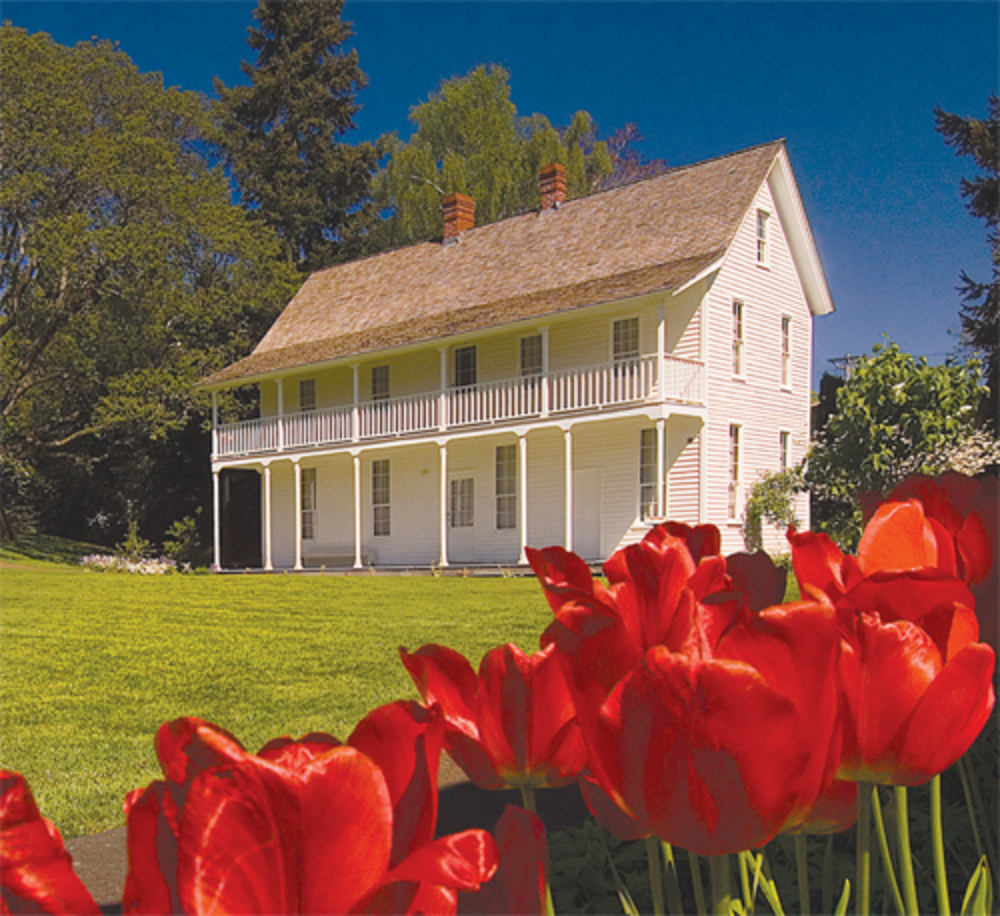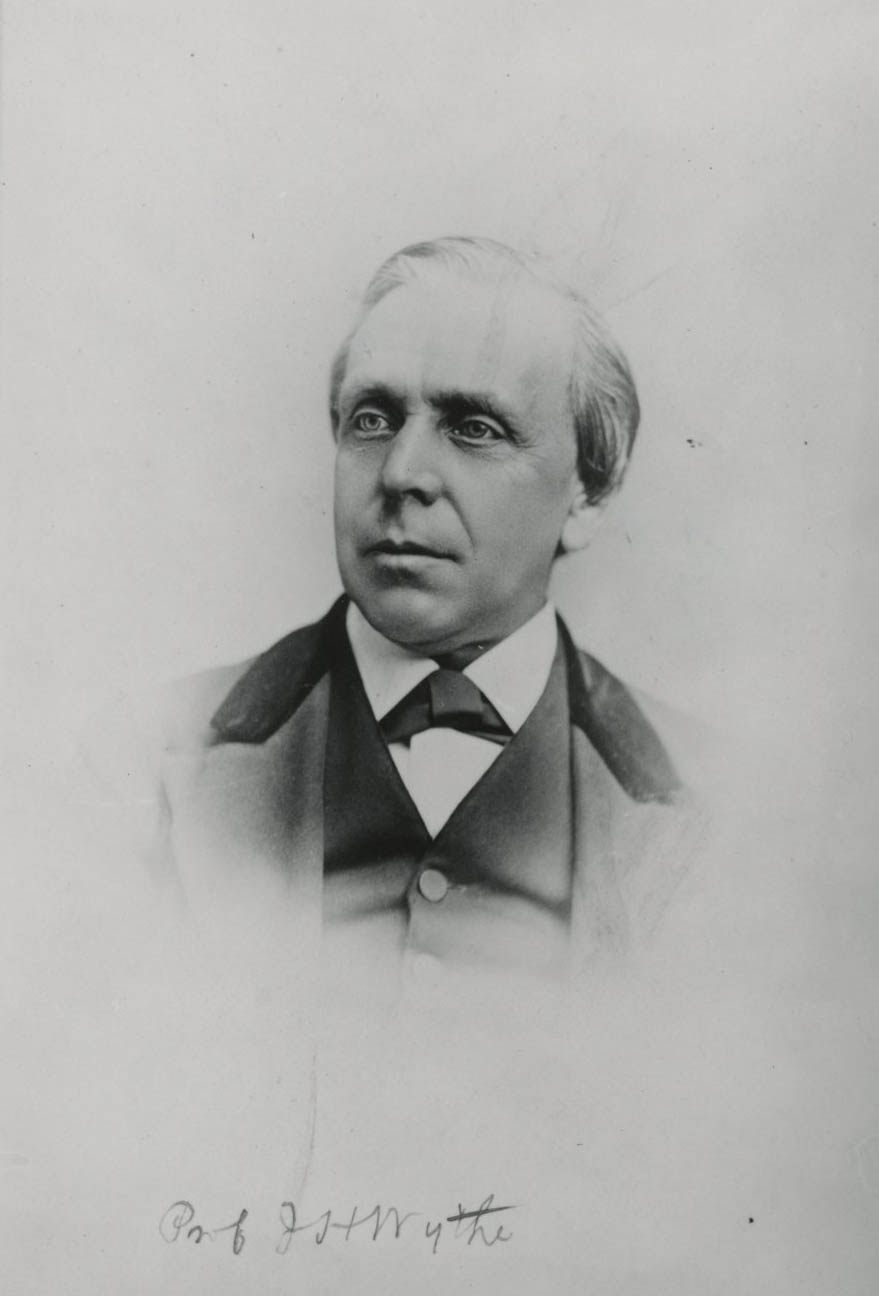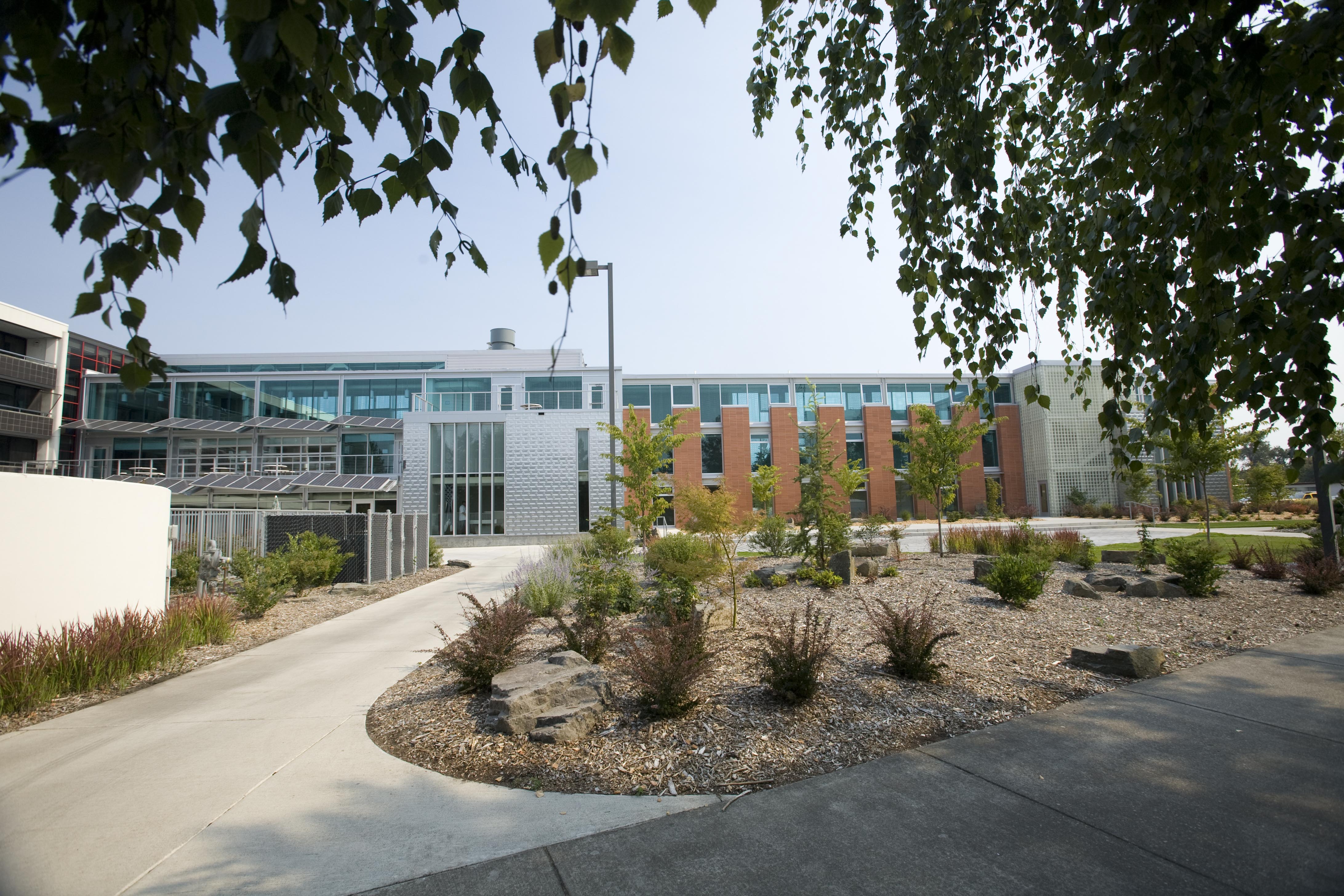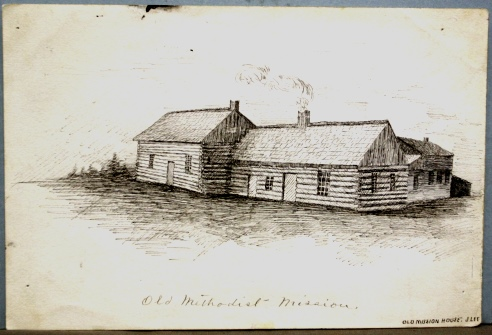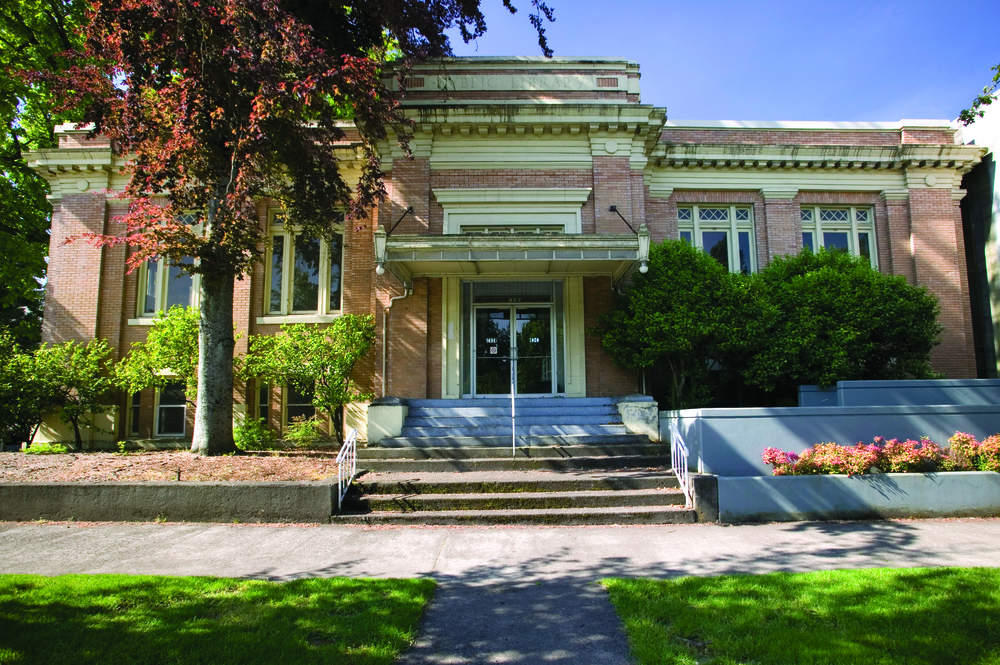Willamette University, the oldest university in the West, was founded in 1842. Located in Salem, the university had its origins in a school for Native American children, operated by Reverend Jason Lee and his fellow Methodist missionaries from 1834 to 1844. Throughout its history, Willamette University has honored its historic roots in the United Methodist Church and has remained true to its mission of providing a sound liberal arts education for both men and women. Over time, it has educated many of the Pacific Northwest’s business, professional, and cultural leaders.
In 1842, Lee and other missionaries established the Oregon Institute, a separate school for children of EuroAmerican settlers. After two years, the new school took over the three-story frame building of the discontinued Native American school, located on the site of the present-day Willamette University campus. The 1853 session of the Oregon territorial legislature, meeting in the Oregon Institute building, granted a charter to the school as Wallamet University. The university operated as a coeducational institution from its inception. In 1859, its first graduate, Emily York, earned the degree of Mistress of English Literature.
Willamette University grew slowly, as funds were difficult to raise in a frontier environment. In 1864, Reverend Alvan Waller began raising money for a new college building. Completed in 1867, the imposing new brick structure, initially known as University Hall (later Waller Hall) stood five stories high in the form of a Greek cross. That same year, the university started a medical college on campus, the first professional school established in the Pacific Northwest.
During the 1870s, Willamette expanded its offerings, adding an elementary school, a commercial department, and a music department. Total enrollment during the 1870s averaged 280. In 1883, the trustees established a College of Law; and in 1880, the medical school moved to Portland where there were better clinical facilities.
Willamette faced a new challenge to its existence in 1891, when a rival Methodist university opened in Portland and attracted the Salem school's students and faculty. It was a trying time for Willamette, as competition from the new Portland University diverted financial support and students, and the College of Medicine lost its clinical privileges at Portland hospitals and had to return to the Salem campus. By 1899, the Portland University had failed financially and united with Willamette.
In the first quarter of the twentieth century, Willamette’s administration concentrated on raising the university's endowment and constructing new buildings, including a medical college (1906), a theological seminary (1906), classrooms (Eaton Hall, 1909), a women’s dormitory (Lausanne Hall, 1920), and a large gymnasium (1923). In 1913, the medical school was closed and merged with the University Of Oregon College of Medicine in Portland. Even during the Depression, however, the university managed to add to its physical plant with a library (1938) and science hall (1941). The College of Law moved into the old Salem post office, which was relocated to campus in 1939.
During World War II, Willamette housed a College Navy Training Program (V-12), which helped keep the university healthy at a time of limited male enrollment. In the last half of the twentieth century, the university continued to expand its physical plant and increase its endowment. Most of the buildings were constructed of red brick and exhibited the stripped or modern interpretation of the Georgian architectural style. The buildings were set in a thoughtfully landscaped environment centered on a millrace, giving the sixty-one-acre campus a pleasing appearance and physical unity.
Willamette trustees and administrators developed new academic programs and educational relationships during this period of growth. In 1965, for example, the university began a sister-college arrangement with the International College of Commerce and Economics (now Tokyo International University). The George H. Atkinson Graduate School of Management opened in 1974, and the university launched a School of Education in 1995 (now the Graduate School of Education).
The university has an academically selective student body with an average of 2,402 undergraduate and graduate students. Willamette’s strong sense of community service is reflected in its motto: “Not unto ourselves alone are we born.” The university is recognized nationally for its commitment to environmental and educational sustainability programs and ranks third nationally among comparably sized colleges for its number of graduates in the Peace Corps. More than half of the university's undergraduates study abroad.
Willamette’s notable graduates include long-serving United States Senators Mark O. Hatfield and Robert Packwood, Norma Paulus, the first woman to hold an elected statewide office in Oregon, and Nobel laureate in economics Dale Mortensen.
-
![Eaton Hall in foreground]()
Willamette University.
Eaton Hall in foreground Courtesy Oreg. Hist. Soc. Research Library, 79935
-
![A sketch of the Oregon Institute]()
Oregon Institute.
A sketch of the Oregon Institute Courtesy Oreg. Hist. Soc. Research Library, OrHi564
-
![An 1858 sketch of what was then called Wallamet University by artists Kuchel and Dresel. This building burned down in 1872.]()
"Wallamet University," 1858.
An 1858 sketch of what was then called Wallamet University by artists Kuchel and Dresel. This building burned down in 1872. Courtesy Oreg. Hist. Soc. Research Library, OrHi76255
-
![]()
The old capitol building and Waller Hall.
Courtesy Oreg. Hist. Soc. Research Library
-
![]()
Waller Hall.
Courtesy Oreg. Hist. Soc. Research Library, OrHi562
-
![Waller Hall, built in 1867]()
Waller Hall.
Waller Hall, built in 1867 Courtesy Oreg. Hist. Soc. Research Library, OrHi55629
-
![]()
Eaton and Waller Halls, c.1920.
Courtesy Oreg. Hist. Soc. Research Library, 24783
-
![Photo from the Linkletter Studio]()
Willamette University students, 1924.
Photo from the Linkletter Studio Courtesy Oreg. Hist. Soc. Research Library, ba015992
-
![Eaton Hall, built in 1908-09]()
Eaton Hall.
Eaton Hall, built in 1908-09 Courtesy Oreg. Hist. Soc. Research Library, 17947
-
![Baxter Hall, built by Pietro Belluschi in 1948]()
Baxter Hall.
Baxter Hall, built by Pietro Belluschi in 1948 Courtesy University of Oregon Libraries, pna_20883
-
![A recent photograph of Eaton Hall]()
Eaton Hall.
A recent photograph of Eaton Hall Courtesy University of Oregon Libraries, pna_03983
Related Entries
-
![Alvan Waller (1808-1872)]()
Alvan Waller (1808-1872)
In most histories of Oregon, Alvan Waller appears most prominently as t…
-
![City of Salem]()
City of Salem
Salem, the capital of Oregon, is located at a crossroads of trade and t…
-
![Jason Lee (1803-1845)]()
Jason Lee (1803-1845)
Few names in the history of early nineteenth-century Oregon are better …
-
![Jason Lee House]()
Jason Lee House
The house built for the Reverend Jason Lee in 1841 is the principal rel…
-
![Joseph Henry Wythe (1822-1901)]()
Joseph Henry Wythe (1822-1901)
Joseph Henry Wythe, M.D., served as president of Willamette University …
-
![Tokyo International University of America]()
Tokyo International University of America
In May 1989, the first group of students walked through the doors of th…
-
![Willamette Mission]()
Willamette Mission
Willamette Mission was the first noncommercial agricultural community e…
-
![Willamette University College of Law]()
Willamette University College of Law
In July 1866, the Reverend Luther T. Woodward reported to the Willamett…
Related Historical Records
Map This on the Oregon History WayFinder
The Oregon History Wayfinder is an interactive map that identifies significant places, people, and events in Oregon history.
Further Reading
Gatke, Robert M. Chronicles of Willamette: The Pioneer Universtiy of the West. Portland, Ore.: Binfords and Mort, 1943.
Hines, Gustavus. Oregon and Its Institutions: Comprising a Full History of the Willamette University. New York: Carlton and Porter, 1868.

